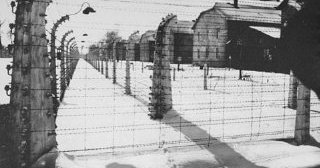According to the ominous survey conducted by Forsa for German weekly magazine Stern, young Germans cannot connect the name of Auschwitz to the concentration and extermination camps built by the Nazis where one million and three hundred thousand people were killed, out of which the large majority were Jews (one million and one hundred thousand) along with political prisoners, homosexuals, Roma people, Jehova Witnesses, the mentally ill and common criminals.
The initiative Treno della Memoria, organized by the Italian association Terra del Fuoco, aims at keeping the memory alive and not forgetting this dark piece of European history. Each year during the week of 27 January, the association arranges guided tours for college students coming from all over Italy, to the camps of Auschwitz-Birkenau and to the Krakow’s ghetto.
This year around 3200 young students aged 16 to 19 set off from Italy by train to take part in this experience. Meanwhile the participation in the event is growing each year as the association tries to expand their activity to a European level, involving students from all over the continent.
The President of Terra del Fuoco, Oliviero Alotto, reminds that the biggest mistake that can be made by visiting the concentration camps of Auschwitz-Birkenau is to fall into the prospective of large numbers. Indeed it is easy to forget the dignity and the personal tragedy of every single inmate here. For this reason, all the participants are briefed during the previous autumn months by attending conferences, meetings and seminars with historians, eyewitnesses and survivors.
Auschwitz-Birkenau is near the small village of Oświecim. The group visit starts at the concentration camp of Auschwitz I. This ancient Polish military base was already in use by the Germans as a prison for the first political prisoners of the war by the end of 1940. Here, old red brick buildings, once crowded lodgings for prisoners, today collect information about the inmates’ daily life in the camp, made up of forced inspections in the courtyard, hard labour at the breaking point of human endurance, and prison official persecutors arbitrariness that could decide the death, life or torture of prisoners. It is here that “The Doctors” carried out their inhuman experiments; it is here that the deadly Zyklon-B was tested for the very first time; it is here that in one of the confinement cells, father Maximilian Maria Kolbe perished by starvation after taking the place of a married man. Then again the death wall, the gloomy sentence “Arbeit Macht Frei,” the barbed wires, the gallows, the pictures of thousand of inmates with sunken faces, scrawny bodies, confused and lost gazes, the crematories and gas chambers.
After entering the camp, every single student has to choose among the thousand of prisoner pictures in Blok number 5, a name, a face, an identity, and write it down on a small piece of fabric, to be carried around during the rest of the visit. For the visitor, it is now easier to empathize with the personal sufferings of the chosen prisoner.
The temperature outside drops by several degrees, and early in the afternoon we move to Birkenau (or Auschwitz II), the huge extermination camp. Proceeding along the railway that crosses the camp, walking over the ramps where inmates were dropped like animals from wagons before being chosen if able or not to work (but in this second case surely able to die), marching on the snow next to the interminable fences made of barbed wire (once electrified), having a break just to peer at the huge area that encompassed 300 wooden sheds (today the red brick chimneys are still standing), staring at the lavatories, the watch towers of the SS, always with your eyes half closed and your neck wrapped up in a scarf, even in font of the ruins of the gas chambers, because the cold, at minus 20 degrees, enters every single space left open in one’s outfit while the brain does not work and does not understand.
Realizing what happened here by visitors is not as obvious as you may think. Acceptance is a difficult process and sometimes it seems even easier to refuse the facts.
Imagining one million people in a queue or in a square is complicated and it is even harder to think about the same number of people sent to die (sentenced to death).
These young students have come to Auschwitz to try to understand all of this. Now they have a new task, which is to testify since an imaginary relay baton has been passed to them.
European history has also passed through here. Visiting this place is a necessary step to better understand and enjoy our freedom, democracy and the European Union. Among statements and proclamations even the most radical racist, homophobic and intolerant European party would (probably) not accept so much hate, rage and violence but; unfortunately, that does not mean that some growing gloomy intolerant ideologies can prepare the ground for someone who would conceive and undertake such actions again.
Primo Levi, an Italian survivor of Birkenau, wrote in one of his books: It happened and it can happen again.
Staying watchful is not an option!


Follow the comments: |
|
